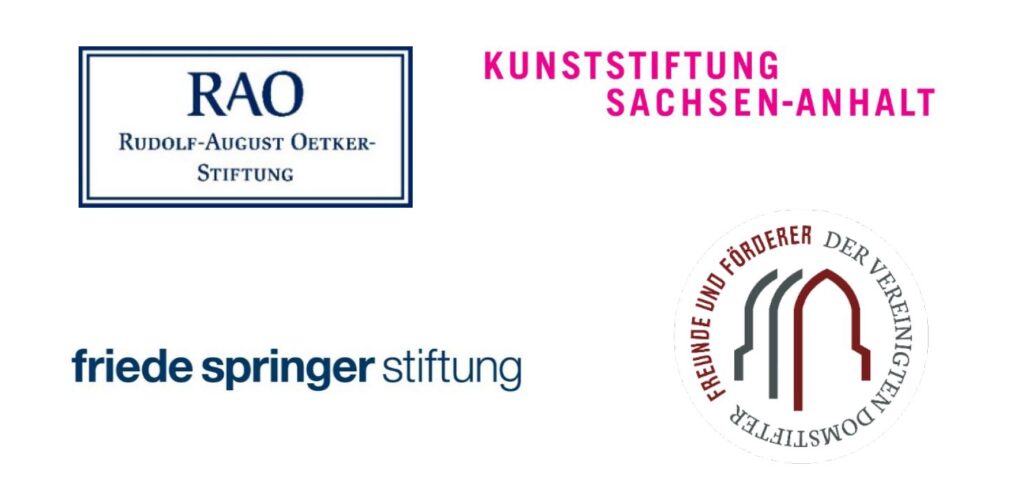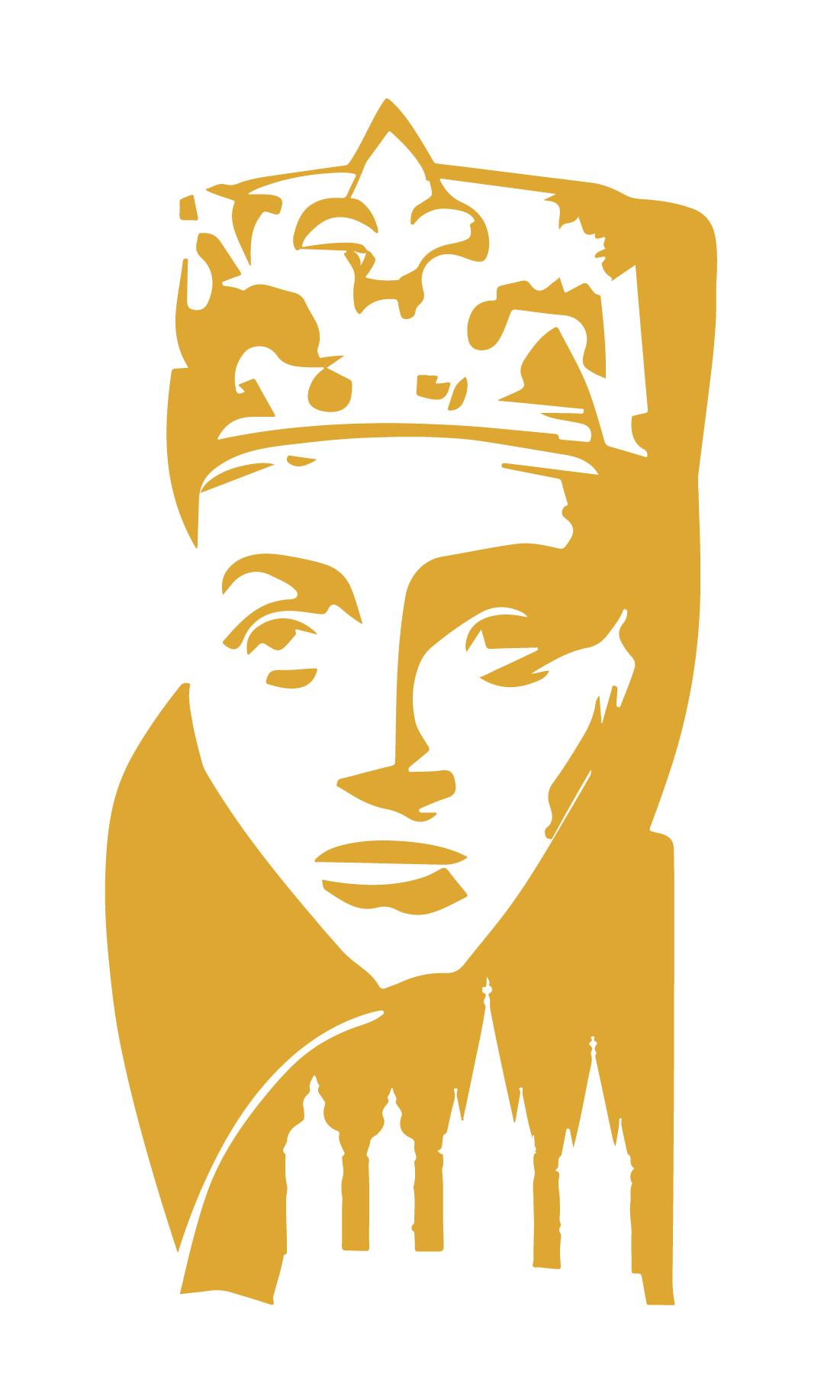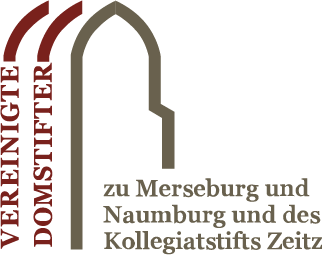TRIEGEL MEETS CRANACH
The altar of Mary in Naumburg Cathedral
In 1519, Lucas Cranach the Elder created a three-winged altar retable for the altar of Mary in Naumburg's west choir. The central part of the retable, which depicts the Virgin Mary with Child, was destroyed in 1541 in the course of an anti-image campaign. In this way, the west choir lost its patroness.
The large-format side wings with their portraits of the two founding bishops and various saints have survived the centuries and were previously on display in the cathedral treasure vault of Naumburg Cathedral.
After more than 500 years, the two original grand pianos were supplemented by a newly created central section and a predella by the Leipzig artist Michael Triegel.
With this altarpiece, the west choir of Naumburg Cathedral temporarily regained its liturgical centre in June 2022.
The altar was on display in Naumburg's West Choir until 4 December 2022, before going on an exhibition tour lasting just under a year. Between 17 December 2022 and 11 June 2023, the altar was exhibited in the Diocesan Museum Paderborn was shown. It was subsequently on display from 22 June to November 2023 in the Marble Hall of the Klosterneuburg Abbey near Vienna. Here you will get an impression of the presentation of the altar on site. You can read a summary of the two exhibition stations here read.
In December 2023, the altar returned to the west choir of Naumburg Cathedral and will be on display there until July 2025.
Here you can get an impression of the altar in the west choir in a 360 degree tour.
The Altar of Mary by Lucas Cranach the Elder
Radical were the changes of the west choir in the first quarter of the 16th century, which were connected with the reshaping of the room stood as a burial chapel Bishop John of Schoenberg. Between 1517 and 1519, the Passion reliefs and the Crucifixion group of the rood screen as well as the founder figures covered more Versions. The side altars, attested since the 13th century, in the west choir were removed, leaving only the central Marian altar of the choir was left standing. For this was built a three-winged altar retable at Lucas Cranach the Elder in Wittenberg for the enormous price of 500 Gulden commissioned. The completion of the Cranach altar was the climax and conclusion of the building campaign that ended in 1519.
The reredos dedicated to the Mother of God stood for more than 20 years on the altar. In the course of the religious disputes of the Reformation period The Protestant Superintendent Nikolaus Medler the butchers' guild in 1542 forcibly gained access to the Naumburg Cathedral. Initiated by the order of the Elector of Saxony removed he made various representations of the Virgin Mary, which include the central part of the Cranach altar counted.
The large-format side wings of the Cranachaltar with the portraits of the two founder bishops and the of various saints, of which Mary Magdalene and James the Elder from their fine execution stand out, testify to the exceptional Quality of the work. All on the inside and outside of the wings depicted saints (Barbara, Catherine, Philip, James the Elder, James the Younger and Mary Magdalene) were previously side altars in the West choir consecrated. In this respect, the Cranach altar as a decisive liturgical point of tradition of the west choir. Striking is the designed gold background of the inner pages of the side wing, which is certainly also on the lost middle part had been continued and aimed at a magnificent effect of the retable.
Since Cranach had completed his altar after the recasting of the and the Passion reliefs, it can be assumed that the be that it takes into account the size and effect of the retable in of the space of the west choir and the newly painted figures of the founders had designed.
The project Triegel meets Cranach
In agreement with the Protestant Parish of Naumburg With the altar, the United Cathedral Foundations intend to strengthen the spiritual attraction of the Naumburg Cathedral. Supported by the Bishops of the Protestant Church of Central Germany and the Catholic diocese of Magdeburg and by renowned art historians. the main focus is on the work of Lucas Cranach the Elder. altarpiece on the altar of the Virgin Mary in the west choir in connection with the with contemporary art and to liturgically in the service of the proclamation.
In this way, the west choir temporarily gains its liturgical center back. This makes a tradition that has existed since the Reformation healed a festering wound in the history of the denomination and an important ecumenical impulse sent out.
The obverse depicts a "Sacra Conversazione". Central Mary presents the newborn Savior, while numerous Personalities, both as saints once venerated in the west choir - supplemented by Dietrich Bonhoeffer - as well as contemporary people can be interpreted, hold a cloth of honor and childlike Angels make music to it. They make clear to the viewer that the event of salvation always has its own personal reference. which requires the commitment of the individual.
On the back of the In the middle part, the Risen Christ is seen as the "Salvator Mundi". He is depicted in the midst of the architecture of the Naumburg west choir and In this way, the completion of the history of salvation is made clear. not in an undefinable temporally and spatially distant space will happen, but also concretely and directly at this place is possible.
The bruises on the front and back refer to on the symbolism of the Lord's Supper or on the Passion.
The artist Michael Triegel
Michael Triegel was born in Erfurt in 1968 and studied painting at the Leipzig Academy of Visual Arts under Arno Rink and Ulrich Hachulla from 1990 to 1997. Triegel gained international fame in 2010 when he was commissioned to paint a portrait of Pope Benedict XVI.
Previously, he had already completed several ecclesiastical commissions, such as two large-scale altarpieces for the churches in Grave and Ebern and a ceiling painting for the cathedral music in Würzburg. This was followed in 2011 by the third altar for the church of St. Augustine in Dettelbach and in 2015 the design of two church windows for the parish church of St. Mary in Köthen.
In 2017, his devotional picture Merciful Jesus was dedicated in the church of St. Peter and Paul in Würzburg. In 2018, the high altarpiece "Incarnation" followed for the church of St. Oswald in Baunach.
Along with Neo Rauch, Michael Triegel is considered the most important representative of the New Leipzig School.
The Naumburg West Choir
The twelve larger than life Donor figures in the west choir of Naumburg Cathedral possess an incomparable Closeness to reality and individual expressiveness that had never been seen before. after that were also rarely achieved.
How the lines of sight of the founder figures Ekkehard, Uta, Dietrich and Hermann prove, was the liturgical center of the room from From the beginning, the central altar block in the polygon, which is the Mother of God Mary (documented since 1281).
Stipes and Mensa made of Freyburg shell limestone are originally preserved. In the Seal image of the leading dignitaries of the cathedral chapter appear since the mid of the 13. In the middle of the nineteenth century, the church underwent conspicuous changes. The figurative Representation of Mary with child now appeared for the first time on an equal footing next to the Dompatronen Peter and Paul in the stylized four-towered Housing of the Cathedral. Due to this seal design and comparable obtained Examples in Europe can be derived from an original Main altar of the West choir existing sculpture of a Madonna in the shrine or Canopy to be assumed, which, however, is no longer preserved.
The project was made possible with the kind support of

and numerous private donors.
The United Cathedral Foundations would like to thank all partners and supporters.
Marian Altar Press Releases
2024_02_05_Cranach-Triegel altar remains locked during Passiontide_Naumburg Cathedral
2023_12_02_Heimgekehrt - the return of the altar of the Virgin Mary to Naumburg Cathedral
2022_11_30_Press_release_Travel blessing for the Marian reredos of Naumburg Cathedral
2022_11_25_Press_Release_Colloquium_New insights gained
2022_08_23_Visitor survey on the Marian altar in Naumburg Cathedral started
2022_07_02_Press_release_Triegel meets Cranach_The Altar of Mary in Naumburg Cathedral
2022_08_23_Visitor survey on the Marian altar in Naumburg Cathedral started



 Skip to content
Skip to content